
The cutting edge of desktop 3D scanning
Fully-automated desktop 3D scanner with one-click 3D capture
Artec Micro brings the latest in scanning technology to your desktop. Its advanced twin color cameras and blue LED lights are perfectly synchronized with Micro’s dual-axis rotation system (swing & rotation) to create the ultimate digital copy of your object with a minimum of frames captured.

User-friendly 3D scanning
Compact and ready to scan in seconds. Simply mount the object on the circular scanning platform, and you're ready to scan. Choose from a variety of smart scanning paths. Then watch in real time as your scan unfolds on the screen in jaw-dropping detail. Only a minimum of training is needed with Micro. Following a quick introduction, you'll be scanning small objects on your own in no time.
Powerful, robust software
Right out of the box, Micro integrates with the industry-acclaimed Artec Studio for real-time digital capture. See your scans coming to life on the screen. After scanning, Artec Studio makes it easy for you to process your scan. Simply follow the same series of steps as you would with our handheld scanners, and then export the final 3D model to software such as SOLIDWORKS, PolyWorks Inspector, Control X or Design X.
Smart scanning mode
Digitize your objects completely automatically and in minimum time.
All with virtually no user input. Just mount the object on the scanning platform and go. Micro takes care of the rest.
With the Smart scanning mode, Micro captures every surface of your object in the least amount of time, using an ideal number of frames. This means minutes and megabytes saved on processing every scan. Now you'll have everything digitized much sooner, and your hard disk will thank you for the extra space saved.


Quality inspection
Inspect parts in metrology-grade accuracy
Across a variety of industries, there is a growing need for ensuring that product quality levels are as high as possible. Delivering metrology-grade scans at up to 10 microns’ accuracy (0.4 thou), not only can Micro “see” well below the human visibility threshold of 40 microns, but its 3D measurements are among the best in today’s cutting-edge scanners, making it a perfect choice for inspection and much more.
Reverse engineering
A must have for Scan-to-CAD of small parts
Whether you have a small part to reproduce for which no blueprint exists, or you need to quickly redesign or simply modify an existing part and either mill or 3D print it, Artec Micro can do the job. Small parts can be a real challenge for handheld scanners, but Micro was created for exactly this.
Its precise 3D measurement allows you to digitally fit together legacy parts with those you’re creating, capturing even the finest details that most other scanners will miss. Accelerate your design, prototype, and production cycle by weeks and save thousands in the process.


Jewelry
Take your custom jewelry art to the next level
Forget about the traditional method of calipers and tracing methods. In minutes, Artec Micro transforms intricate jewelry items into CAD/CAM data for design, modification, 3D printing, and casting. Saves hours of time in the design and production of complex and highly-detailed jewelry pieces. Create custom-fitting wedding bands from engagement rings in a matter of hours rather than days. Update family heirlooms by taking an existing diamond or stone and creating an entirely new jewelry piece to perfectly complement it.
Cultural heritage preservation
Digitize your objects completely automatically and in minimum time.
Today, countless priceless historical items are locked away in museum storage or back rooms. Over time, due to improper conditions, many of these objects are deteriorating. Documenting these precious items is a race against time. Artec Micro gives you the power to make highly-detailed 3D models of small cultural objects in just minutes. From there, these models can be archived, or easily shared with researchers and others either locally or around the world, or sent to a 3D printer for printing in a variety of materials.


Dentistry
One-click 3D capture for dental practices and labs
Artec Micro is ready for today’s dental practice, creating precise CAD/CAM-ready 3D scans for lab use and 3D printing. Ideal for scanning single teeth, entire arches, or complex impressions. Export from Artec Studio to ExoCAD and other dental software. Perfect for making exact digital reproductions and archival copies of crowns and bridges, inlays and onlays, dentures, custom abutments, implants, and more.

Access
With any plan in Artec Cloud, you’ll be able to view and comment on existing projects from any browser.
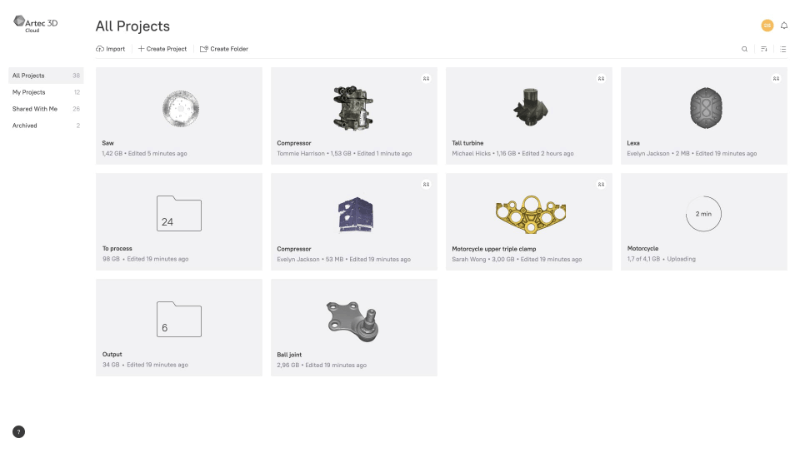
Project Browser
With easy viewing that you’d expect to see in any standard application or program, you’ll be able to browse through and find the project you’re looking for on any plan. The Collaboration and Processing account is required to organize folders
Collaboration
In Collaboration mode, expect no more missed messages, messy project management, or poor coordination. Here, entire projects can be worked on in one place, making it far easier to coordinate among your team.

Working together
Scans can be uploaded, comments can be left, and essential conversations can be had – you’ll even be able to share images with your co-workers for reference or inspiration. If you need to have something scanned, start a new project on Cloud, upload a photo for reference, send it to your teammate – they’ll be able to receive your task, respond to your message, and get right to work.

Save your work
With Collaboration, you won’t miss anything, either; a full history of your discussions and communication will stay right here. With all your data and previous work kept in one place, you can expect easy reference and excellent communication within your team.

Attach Images
If you or your client has a visual of what they’d like to be scanned, an image can easily be attached into your project, too. Send the project and an invitation to your client or 3D service provider, and so begins the work. Artec Cloud is now the only platform you need for communication and collaboration to take place.

Import & Share
If you are on a Collaboration or Processing plan, you’ll be able to upload and download 3D data and models. Supported files include Artec Studio data formats and popular 3D model formats such as OBJ, PLY, STL, and WRL. Uploaded data is available online immediately for viewing right away.
You can share your work with colleagues on Viewer accounts and they will be able to view and comment on it.
Processing [BETA]
With Artec Cloud, you now have easy processing with the tools you need most, right on your browser.
Key features
If you’ve gone all in with a full-access account, your processing options are similar to Artec Studio – choose between Manual and Autopilot. On a Processing account, you can process up to 20 projects per month – and since you don’t have to use up your computer memory, GPU, or CPU, you can process as many as you like at a time.
In manual mode, you’re presented with five stages of processing: Align, Prepare Scan, Make Model, Adjust Model, and Export.
Align
The alignment tool is made with ease of use in mind: Choose between manual and auto to align multiple scans according to your needs or preferences.
Prepare Scan
With fewer actions and steps, there's no need to switch between panels or different groups of algorithms, making it that much easier for new users while saving time for all. When selecting Key Frames, type the number you want, or move the slide to the desired digit.
Make Model
The Make Model process corresponds with Fusion in Artec Studio. Here, you can fuse your scans and create your 3D model before proceeding to the next stage.
Adjust Model
The final step in processing is to adjust your model. Here, you can work on texturing, mesh simplification, and removing any unnecessary noise to clean up your final model before you’re ready to share, export, or send it.
Export
Your processed 3D models can be exported with your chosen level of granularity in OBJ, STL, PLY, or VRML, while high-resolution screenshots take the form of JPG, PNG, or WEBP.
Manual Editing
Also powering up the Processing plan is manual editing. Here, you’ll have the ability to utilize the most essential tools from Artec Studio, which you can use at any stage of Processing.
Edit your data with the Eraser, Position, Transformation, Smoothen, and Mirror tools.
Erase
Remove unnecessary or unwanted data from your 3D scanning scene to create crisp, clean 3D models.
Position
Reposition or center your objects as you require during your processing. The Position tool is useful for when you work with several objects, or need to center your objects within a coordinate system.
Transform
Within Artec Cloud, you are able to change the size of your scanned objects should you need them on the same scale as one another, or larger or smaller than they appear.
Smooth
This tool is useful for when you need to smoothen scanning defects, which may at times occur when scanning tricky surfaces or hard-to-reach areas.
Mirror
Particularly useful in reverse engineering, the Mirror tool lets you flip your scan data to create a mirrored version of the objects you have scanned.
HD is a scanning mode powered by artificial intelligence algorithms that allows you to create sharper, cleaner, and far more detailed 3D models with a resolution 2X higher than the original SD data. In HD Mode, a resolution of up to 0.2 mm can be achieved, and your Eva can capture much smaller and thinner elements, hard-to-reach areas, black and shiny surfaces and other parts that were difficult or impossible to capture before. HD Mode is available for Leo and Eva scanners running Artec Studio 15.1 or higher.
Visit here for more information about HD Mode.
Yes! Eva uses white structured light technology, which is absolutely safe for scanning any living creature. To get the best results, make sure that the person or animal holds their pose for the entire scanning process to avoid any artifacts or noise on the final model. Animals, fidgety as they tend to be, are often very tricky to capture so we recommend scanning them while they sleep.
To learn more about scanning people with Artec Eva, visit our Support Center.
No. Eva requires neither targets nor calibration to get started. The scanner uses powerful hybrid geometry and texture tracking to capture the objects in 3D — even those with minimal features. Eva collects two sets of data by which to track and perform processing, which results in much easier, faster, and smoother 3D scanning, as well as faster 3D data processing in comparison to scanners that require targets for scanning.

Multi-resolution Smart Fusion
Artec Studio's groundbreaking Smart Fusion algorithm seamlessly combines data from various Artec 3D scanners to create highly intricate 3D meshes. You can capture extensive objects or regions using Ray II, address any missing sections with Artec Leo, and then register both scans in a single, straightforward process. The result is a blended-data model, encompassing the broader scan captured at one resolution and the finer details digitized at another.

4X faster HD Mode
Artec 3D's revolutionary HD Mode is not only the updated default setting for Artec Eva and Leo but is also subject to ongoing enhancements. It now operates at an increased speed and features a more user-friendly interface. The adjustment of point density and frame frequency is automated, and you no longer have to mess with slider adjustments. Simply select from three presets, and the algorithm takes care of the rest, simplifying the process.

2X faster Global registration
Reduce the time spent on registration of captured frames with Global Registration, an algorithm that now operates at an even faster pace, working twice as fast on average as before.

Single-step mesh optimization
Eliminate folded or dangling polygons in your mesh with Artec Studio's healing tool, which is integrated into a new mesh optimization algorithm. Easily perform mesh healing, simplification, and small object filtering with just a click of a button.
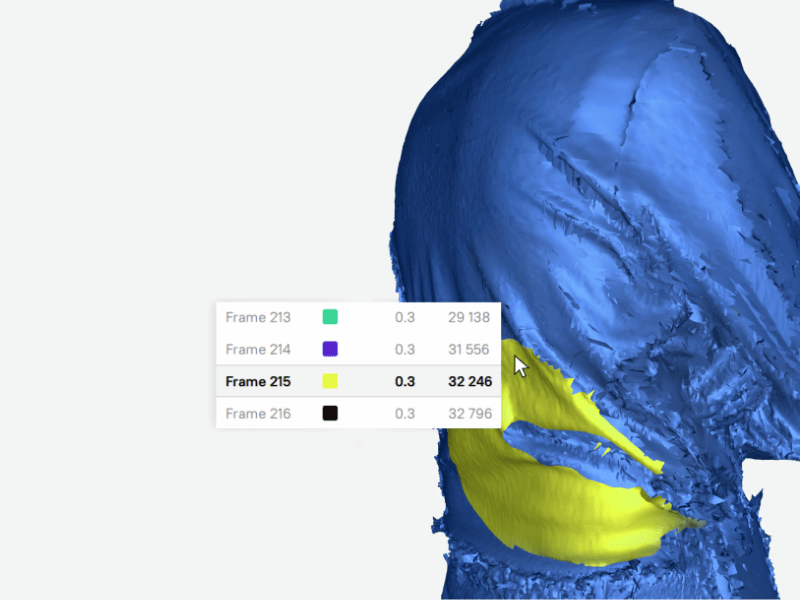
Effortless manual editing
In Artec Studio 18, you have the convenience to effortlessly maintain the fusion quality by quickly identifying and removing misaligned frames by using the alt + LMB combination. Additionally, the new Quick Transformation Tool enables you to anchor one rendered item in position while freely adjusting the position, scale, rotation, and translation of another without affecting the entire workspace.
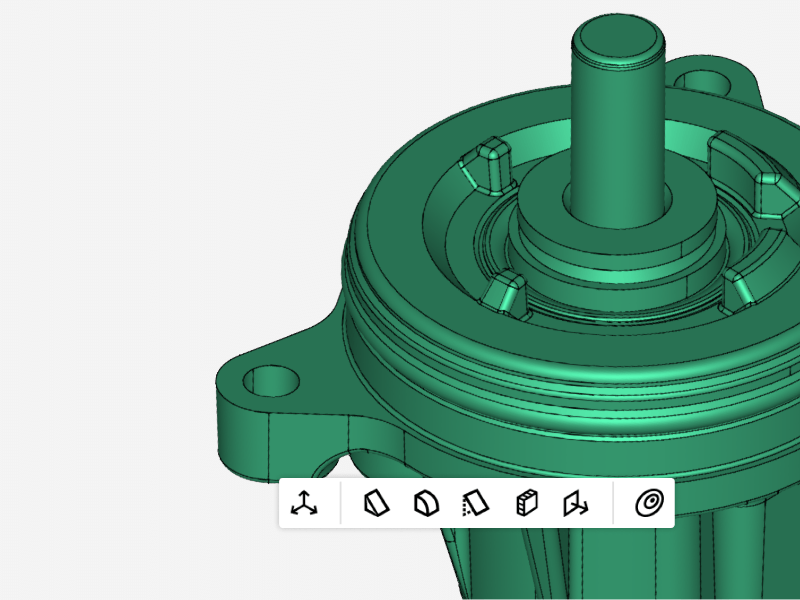
Context-relevant quick panel
The new Quick Panel in Artec Studio is designed to offer users swift access to all the necessary features with just a click. It dynamically displays options that are directly relevant to the ongoing activities within their workspace, ensuring efficient and relevant access to tools and functions.

Boost color contrast with AI
Artec Studio is now capable of employing a neural network for the processing of raw texture frames to vastly improve color contrast, double the scan resolution, and elevate the overall quality of textures.

Scene lighting optimization
With Artec Studio 18, you can reposition light sources within a 3D scene, optimizing the rendering and display of meshes to attain the highest quality results possible.

Tolerance Check Mode
When dealing with a part that must adhere to industry-specific tolerances, simply activate Tolerance Check Mode, and your 3D map will be recalculated, highlighting areas that fall outside the designated tolerance limits.

Automate defect detection
Rapidly identify inaccuracies with the enhanced 3D Compare Map in Artec Studio. Instead of manually inspecting a model's surface, you can swiftly pinpoint its least accurate areas by instructing the algorithm to seek out maximum deviations in mesh-CAD pairs.

2D section analysis
Artec Studio's Section Analysis feature enables you to divide models into segments and perform in-depth inspections, area by area. This function automatically aligns models and meshes, facilitating 2D cross-section analysis to detect any inconsistencies or discrepancies. It's designed to minimize deviations, making it an ideal tool for ensuring accuracy in quality inspections or reverse engineering.

Mesh-to-CAD auto alignment
In Artec Studio 18, the initial step of aligning mesh-CAD pairs, which used to be a manual process, has been automated, eliminating the need for user input. This streamlines the quality inspection process.

Target thickness compensation
Enhance the accuracy of measurements taken with 3D metrology tools such as the Artec Metrology Kit by compensating for the thickness of targets.

Certified for heavy duty deployment
Artec Studio has now gained PtB certification, so you can engage in industrial 3D scanning, safe in the knowledge that you’ve got a tool well-qualified for the job.

Instant deviation analysis
During the reverse engineering process, you can now seamlessly examine any deviations while extracting CAD shapes from meshes, without ever having to leave the Construct tab.

Move & offset faces
Whether you need to create a gap to accommodate deviations or adjust a part to align with the design intent, Artec Studio's move and offset tools are ideal for duplicating and modifying faces in different areas of your workspace.

Improved auto-surfacing
Since Artec Studio 17, Autosurfacing has been a popular feature with many users who re relied on it to transform polygonal meshes into models with smooth 'NURBS' surfaces. Artec Studio now introduces an updated version to help these users to further enhance the quality of geometry reconstruction.
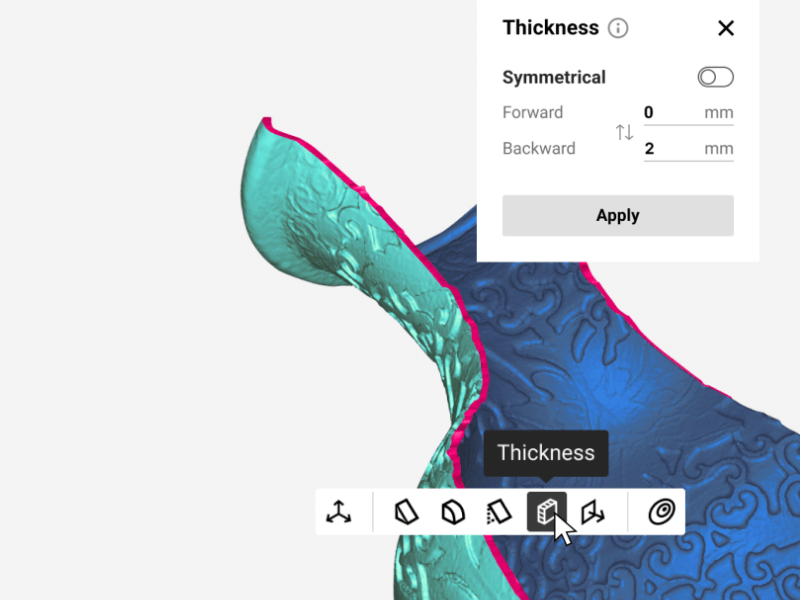
Surface thickening tools
When dealing with the reverse engineering of intricate objects featuring non-primitive, freeform surfaces, Artec Studio now provides a solution. You can now solidify these by thickening the surface of a mesh or CAD model, and lend them greater stability in applications such as 3D printing.
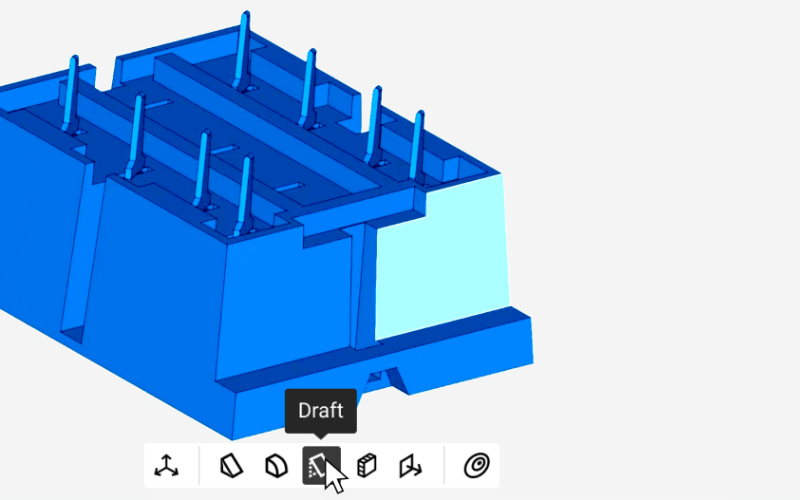
Create draft angles
In Artec Studio, when 3D modeling or reverse engineering cast parts, you now have the capability to introduce a draft angle on the outer surfaces. This allows for easier extraction without causing damage to the molds.

Tools for tidying up
Most parts don't have entirely sharp edges. Artec Studio offers chamfer and fillet tools that allow you to refine models and add a level of polish, providing those finishing touches to reverse engineered parts.

Datum alignment for scan-to-CAD
As a rule of metrology, even when your scan is an impeccable digital twin of a part or object, if it isn’t properly aligned with its corresponding CAD reference model, any variances that show up can be unreliable due to misalignment.
With Datum alignment, all it takes is a few clicks to fully align your meshes and CAD models using key geometric features.

Enhanced targets support for metrology
Gain better manual control over reference objects for data registration such as circular targets, spheres, or checkerboards, if your scanning workflow requires it.
See them in 3D as part of your workspace, choose spheres or circular targets for registration, measure the distance between them, identify which are out of place or missing, and exclude them from registration. In addition, you can now import and choose multiple reference target clouds into the workspace.

Auto surfacing
Convert complex organic shapes into solid CAD models in one click with the new Auto Surface feature. Facilitate reverse engineering of complex geometries and create referential CAD surfaces for in-depth RE workflows in third-party CAD software.

Boolean operations
Modify your models with CAD entities and meshes, using industry-standard boolean operations: Union, Subtract, and Intersect. Build molds, create complex shapes, fine-tune meshes to match the design intent, and more.
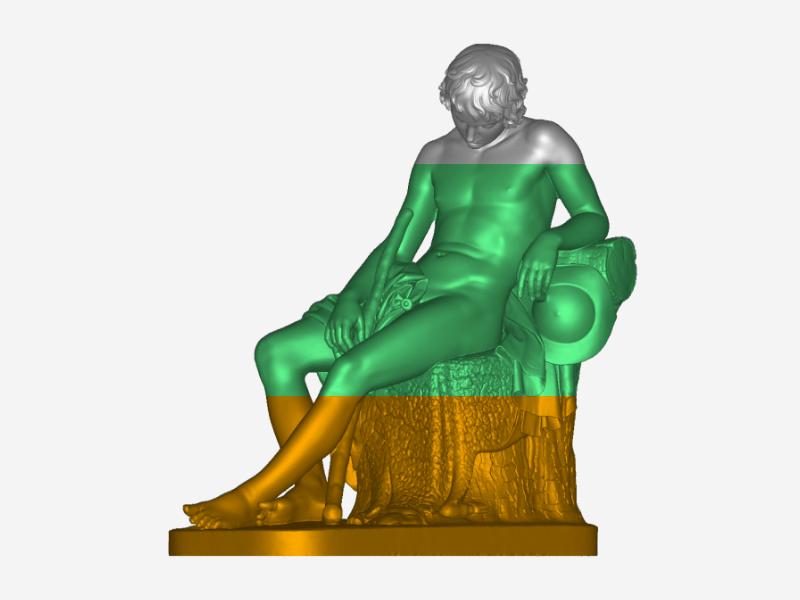
Mesh splitting for 3D printing
For AM professionals, preparing meshes for 3D printing is easier than ever thanks to the new Split by plane feature. This allows you to quickly and precisely break your mesh into manageable chunks, using a pre-fitted plane.

Improved Segment Brush
You can now change the size of the selected region dynamically with the Segmentation sensitivity slider. Simply mark the area you’d like to construct the CAD primitive in, and adjust the degree of expansion area with the slider.

Perfect your 3D model texture for CGI
Working with photos is now even better thanks to improvements in our photo-texturing algorithm. You can now easily preview photos taken for the texture via the new photo-viewing mode and see how they fit into the texture.

Register photos in Artec Studio
Remove photos with any defects, overexposure, or ones that are poorly lit or taken at a suboptimal angle and see how they impact your final texture. With the new algorithm, images are sorted into groups: by size, camera type, or focal distance, allowing you to register them separately, and use all of them for texturing.

3D scan black, shiny, or fine areas
Artec Studio analyzes the surface of your object and automatically adjusts the sensitivity of your scanner to pick up areas that are tricky for 3D scanning. As a result, even new users can digitize black, shiny objects, or hair with ease.

CAD primitives
Speed up your workflow by performing reverse engineering operations right in Artec Studio. A full range of primitives including freeform fitting, will have you zooming along from fitting to constraining to CAD export.

Mesh-to-CAD comparison
For a faster, more streamlined workflow, import STEP, IGES, or X_T CAD files and align your scan mesh to a CAD model without having to leave Artec Studio.

Control X integration
Create customized reports with Artec Studio by selecting the object or objects you need to inspect while Control X runs in the background. The reports most essential to your work will be generated for you.

1.5x faster HD data reconstruction with Leo
Getting HD data for the Leo scanner is now 1.5x faster thanks to the latest update of our proprietary algorithm letting you get the necessary 3D data much quicker and focus on the design, engineering, inspection, and other tasks that matter.

Optimize reconstruction speed for your GPU
This new add-on allows you to test your computer’s graphic card and fine-tune HD Mode settings so they best fit your particular specs. Expect much faster reconstruction of HD data from your Leo or Eva than using default settings.

Upload meshes to Artec Cloud
Directly upload to Artec Cloud and easily share meshes (with a direct shareable link) created in Artec Studio with anyone – no AC account required. All of this can be achieved without leaving the project or switching between the two applications.

Quickly restore unsaved projects
If, for any reason, your Artec Studio project crashes, there’s no need to worry. The software will suggest that you restore it upon the next start, even if you have unsaved changes. No data gets lost!

The world’s first wireless and AI-driven 3D scanner
| Scanner Type | Handheld, Wireless |
| Object Size 🛈 Typical Object Sizes: M: Engines, Sculptures L: Small boats, Turbines |
M, L |
| Light source | VCSEL + White LED |
| 3D Point Accuracy | Up to 0.10 mm |
| 3D Resolution | Up to 0.20 mm |
| Output Type | 3D mesh + texture |

High accuracy long-range laser 3D scanner, ideal for precise capture of large objects
| Scanner Type | Tripod mounted |
| Object Size 🛈 Typical Object Sizes: L: Small boats, Turbines XL: Warehouse, Airplane |
L, XL |
| Laser source | LiDAR |
| Angular accuracy | 18 arcseconds |
| Range | Up to 130 m |
| Output Type | 3D mesh + texture |